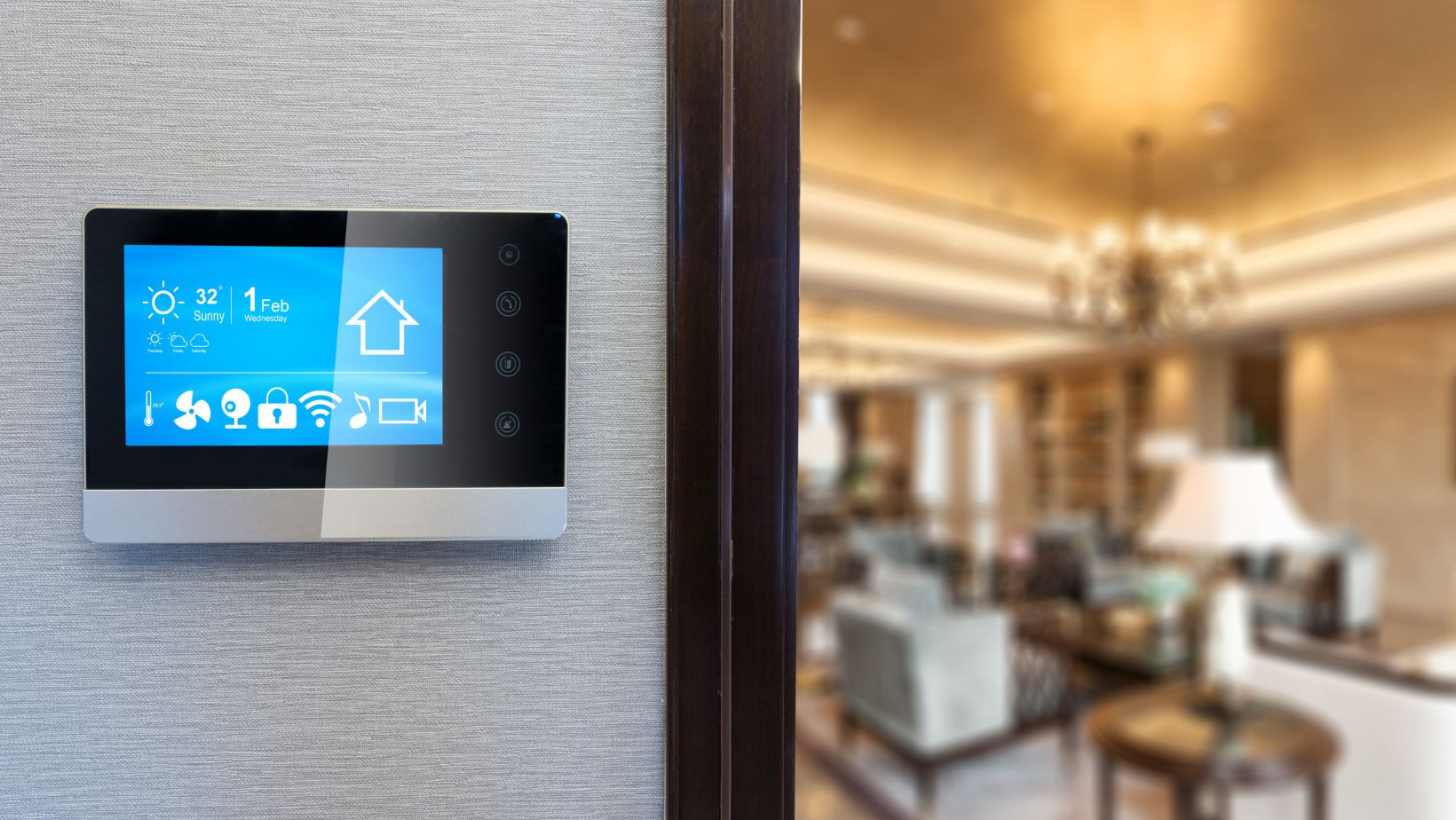”
Key Takeaways
- Evolving Interior Design: Home trends and furniture styles are rapidly changing to reflect modern tastes, emphasizing a blend of functionality and aesthetics in living spaces.
- Sustainable Materials: Eco-friendly practices are gaining momentum, with designers utilizing reclaimed wood, bamboo, and recycled metals to create beautiful and sustainable furniture.
- Innovative and Multifunctional Designs: Multi-functional furniture, such as modular sofas and storage-integrated coffee tables, enhances practicality while maintaining style, catering to contemporary living needs.
- Popular Design Styles: Varied design aesthetics, including modern minimalism, rustic charm, and mid-century modern, allow homeowners to curate unique atmospheres tailored to their preferences.
- Technological Integration: Innovative technologies in furniture, like smart tables and adjustable seating, improve user experience and connectivity within home environments.
- Emphasis on Comfort: The importance of creating comfortable and inviting spaces has grown as people spend more time at home, highlighting the need for practical yet stylish furniture solutions.
As the world of interior design evolves, home trends and furniture styles are constantly transforming to reflect changing tastes and lifestyles. From minimalist aesthetics to bold statement pieces, today’s designs cater to a variety of preferences, making it easier than ever to create a personal sanctuary. Homeowners are increasingly seeking ways to blend functionality with style, ensuring their spaces are not only beautiful but also practical.
Sustainable materials and innovative designs are at the forefront of modern furniture trends. With an emphasis on eco-friendly practices, designers are crafting pieces that are as kind to the planet as they are stylish. As people spend more time at home, the importance of creating inviting and comfortable spaces has never been greater. Exploring these trends can inspire anyone to refresh their living environment and embrace the latest in home design.
Home Trends
The landscape of interior design continually evolves, reflecting current tastes and lifestyles. Contemporary homeowners prioritize a balance between functionality and aesthetics, emphasizing comfort and style in living spaces.
Sustainable materials gain traction in modern furniture, as eco-friendly practices become a priority. Designers increasingly utilize wood from responsible sources, recycled metals, and biodegradable fabrics, promoting a commitment to the environment.
Innovative designs shape furniture trends, with multi-functional pieces becoming essential. For instance, coffee tables with built-in storage or modular sofas that adjust to various needs demonstrate this shift.
Color palettes also reflect current preferences, with warm neutrals and bold accents making a statement. Popular hues include earthy tones like terracotta and rich blues, enhancing cozy atmospheres.
Minimalism remains influential, featuring clean lines and simple forms. Clutter-free spaces foster relaxation and emphasize key design elements. This trend encourages viewers to focus on quality over quantity in furniture selections, highlighting fewer, meaningful pieces.
Indoor-outdoor living is another prevalent trend, as homeowners seek to blend interior spaces with nature. Large windows and sliding doors enhance natural light, connecting the home to the outdoors. This design approach fosters well-being and a sense of tranquility.
Popular Design Styles
Various design styles cater to diverse tastes, creating unique atmospheres in homes. These styles often blend aesthetics and functionality, appealing to contemporary lifestyles.
Modern Minimalism
Modern minimalism emphasizes simplicity and open spaces. This design style utilizes a neutral color palette, focusing on whites, grays, and blacks. Furniture features clean lines and geometric shapes, prioritizing functionality without excessive decoration. Key elements include multifunctional furniture, like sleek sofas that serve as both seating and storage. This approach encourages an uncluttered environment, promoting a sense of calm and spaciousness.
Rustic Charm
Rustic charm celebrates warmth and natural beauty. This style often incorporates raw materials, such as reclaimed wood and stone, creating an inviting atmosphere. Earthy tones dominate the color scheme, harmonizing with the outdoor environment. Furniture tends to be oversized and comfortable, featuring cozy textiles like wool and linen. Accessories often include vintage elements, such as worn leather and handcrafted items, that add character and authenticity to the space.
Mid-Century Modern
Mid-century modern design inspires with its clean lines and organic forms. This style emerged in the mid-20th century, showcasing innovative materials like molded plastic and aluminum. Furniture often combines functionality with vibrant color schemes, featuring hues such as teal, mustard, and orange. Iconic pieces like the Eames lounge chair exemplify this trend. Additionally, large windows and open floor plans promote light and connectivity with nature, enhancing the overall aesthetic.
Key Furniture Pieces for Every Room
Selecting the right furniture pieces enhances functionality and elevates the aesthetic of each room. Focus on these essential items for every space.
Living Room Essentials
- Sofa: A comfortable sofa serves as the focal point. Choose one that accommodates seating capacity and complements the room’s style.
- Coffee Table: An essential for both style and utility, a coffee table should provide a surface for drinks, books, or decorative items. Options include storage-integrated designs.
- Accent Chairs: Additional seating offers versatility. Select accent chairs that match or contrast with the sofa for added visual interest.
- Entertainment Unit: Organizing media equipment and displaying decor, an entertainment unit enhances the space while maintaining functionality. Consider designs with drawers or shelves for decluttering.
- Lighting Fixtures: Appropriate lighting sets the mood. Incorporate various sources, like floor lamps or table lamps, to create a warm atmosphere.
Dining Room Must-Haves
- Dining Table: The centerpiece of the dining area, a dining table should accommodate family and guests. Consider size, shape, and material to suit the room’s purpose.
- Dining Chairs: Choose dining chairs that provide comfort without sacrificing style. Prioritize ergonomic designs for extended gatherings.
- Buffet or Sideboard: A buffet or sideboard offers storage for dishes and linens while displaying decor. It acts as a functional piece without compromising style.
- Display Cabinet: Showcasing fine china or collectibles, a display cabinet adds sophistication. Opt for glass-front designs to create an open feel.
- Lighting: A statement chandelier can enhance the dining experience while complementing the overall decor. Ensure the light is positioned to provide adequate illumination.
- Bed Frame: A sturdy bed frame serves as the foundation for restful sleep. Variety in styles and materials caters to diverse tastes.
- Mattress: Selecting the right mattress is crucial for comfort. Consider factors like firmness, size, and material, focusing on individual sleep needs.
- Nightstands: Essential for convenience, nightstands provide a surface for lamps, books, or personal items. Match the height of nightstands to the bed for harmony.
- Dresser: A dresser offers ample storage for clothing. Look for options with a style that complements the room while providing functionality.
- Accent Chair or Bench: Adding a chair or bench creates a cozy reading nook or serves as a place for clothing during transitions. Choose pieces that enhance comfort and style.
These key furniture pieces facilitate practical use while creating visually appealing environments, reflecting the latest trends in home design.
Sustainable Design Practices
Sustainable design practices prioritize environmental consciousness while enhancing aesthetic appeal. Designers implement strategies that reduce waste, utilize eco-friendly materials, and promote energy efficiency within living spaces.
Eco-Friendly Materials
- Reclaimed Wood: Reclaimed wood, derived from deconstructed buildings and furniture, reduces the demand for new lumber, minimizing deforestation.
- Bamboo: Bamboo, a rapidly renewable resource, serves as a versatile material for flooring and furniture, offering durability and sustainability.
- Recycled Metals: Recycled metals, such as aluminum and steel, lessen the industry’s carbon footprint and contribute to the creation of stylish, robust furniture.
Energy Efficiency
- LED Lighting: LED lighting consumes 75% less energy than traditional bulbs, extends lifespan, and offers various design possibilities for both function and ambiance.
- Energy Star Appliances: Energy Star-rated appliances, such as refrigerators and dishwashers, consume less electricity and water, contributing to cost savings and environmental protection.
Innovative Design Techniques
- Modular Furniture: Modular furniture adapts to various space configurations, maximizing functionality while supporting sustainability by reducing the need for multiple pieces.
- Biophilic Design: Biophilic design integrates natural elements into indoor environments, fostering harmony with nature through plant incorporation, natural light maximization, and organic shapes.
- Secondhand Furniture: Utilizing secondhand furniture not only saves money but also significantly diminishes waste and supports a circular economy.
- Creative Repurposing: Creative repurposing transforms old or unused items into new, functional pieces, enhancing charm and reducing environmental impact.
Sustainable design practices emphasize a commitment to the planet while creating stylish, functional living spaces.
Technological Innovations in Furniture
Technological advancements are significantly transforming furniture design and functionality. Smart furniture integrates technology to enhance user experience and convenience.
- Smart Tables: Some tables feature built-in charging ports and wireless charging surfaces, accommodating the needs of modern individuals.
- Adjustable Seating: Chairs with customizable settings allow users to adjust height, lumbar support, and firmness, promoting comfort and well-being.
- Connected Sofas: Sofas equipped with integrated speakers and Bluetooth connectivity offer entertainment solutions and improve connectivity in living spaces.
- Automated Storage: Storage solutions with automated mechanisms simplify access to items, making organization effortless while maintaining a sleek appearance.
- IoT Integration: Furniture that integrates with smart home systems allows users to control lighting, temperature, and entertainment features through voice commands or mobile apps.
- Augmented Reality (AR): AR applications enable consumers to visualize how furniture fits into their space before making a purchase, enhancing the buying experience.
- 3D Printing: This technology allows for the creation of custom-designed furniture pieces, reducing production waste and promoting sustainability.
Technological innovations enhance both functionality and aesthetic appeal in furniture, aligning with contemporary trends in home design. These advancements respond to evolving lifestyles and preferences, making living spaces more adaptable and efficient.
Embracing The Latest Home Trends And Design
Embracing the latest home trends and design furniture can transform any living space into a stylish and functional haven. By prioritizing sustainability and innovative design, homeowners can create environments that reflect their unique tastes while being mindful of the planet. Multi-functional furniture and a blend of contemporary styles offer endless possibilities for personalization.
As the lines between indoor and outdoor living continue to blur, integrating natural elements and maximizing light can enhance well-being. With technology playing a crucial role in modern design, smart furniture solutions provide convenience and adaptability. Exploring these trends not only elevates aesthetics but also fosters a sense of comfort and connection in the home.
“





 Spatial planning ensures that layouts promote effective movement and utilize available space efficiently. It involves assessing room dimensions, traffic flow, and placement of furniture or fixtures. Proper spatial planning can enhance accessibility and create a more inviting environment.
Spatial planning ensures that layouts promote effective movement and utilize available space efficiently. It involves assessing room dimensions, traffic flow, and placement of furniture or fixtures. Proper spatial planning can enhance accessibility and create a more inviting environment. Space planning involves the strategic arrangement of furniture and objects to optimize functionality and movement. It encompasses creating efficient layouts that enable smooth flow while maximizing the use of space. Designers assess room dimensions and user needs to determine the best placement of furnishings. Public spaces, such as living rooms or offices, require different considerations than private areas like bedrooms or bathrooms. Effective space planning ensures comfort and accessibility, making it essential for meeting practical requirements.
Space planning involves the strategic arrangement of furniture and objects to optimize functionality and movement. It encompasses creating efficient layouts that enable smooth flow while maximizing the use of space. Designers assess room dimensions and user needs to determine the best placement of furnishings. Public spaces, such as living rooms or offices, require different considerations than private areas like bedrooms or bathrooms. Effective space planning ensures comfort and accessibility, making it essential for meeting practical requirements.